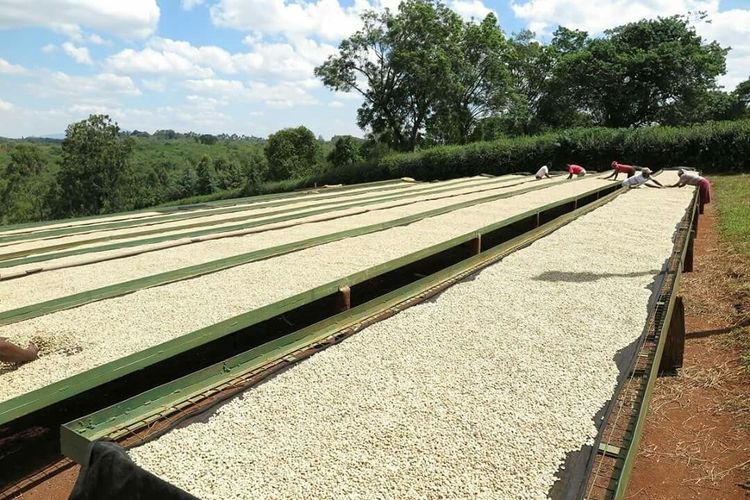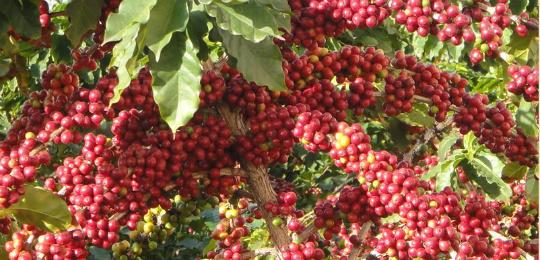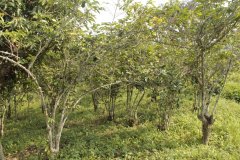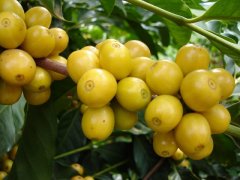Introduction of Colombia-Asorami (ASOANEI Cooperative) Cooperative
For professional baristas, please follow the coffee workshop (Wechat official account cafe_style)

Colombia-Asorami (ASOANEI Cooperative) Cooperative
Colombian coffee is widely sold in many producing countries, ranking the third largest coffee producing country in the world (the first is Brazilian coffee and the second is Vietnamese coffee). Most of the coffee tree species are Kaddura trees, and the owner of the manor will plant some Tibica or bourbon and so on. Almost all administrative areas have excellent producing areas and estates, and about 500000 people work in and around coffee production. 75% of the coffee is exported to countries around the world, earning 12.5% of the overall economy. Colombia's unique water washing method has been studied and developed for more than 10 years. Water consumption has been reduced by 95%, pollution has been reduced by 90%, and the taste and flavor of raw beans have been reduced by 90%. Raw beans have a layer of honey mucosa, which not only maintains the natural ecology, but also increases the layering of coffee beans.
The Nevada Mountains (SIERRA NEVADA), located to the north near the Caribbean, is a protected national park. In the early years, the area was the largest producer of cocaine. The U.S. government invested $1 billion to get the Colombian government to remove the local cocaine into a protected area. Coffee farmers used to be mostly drug traffickers and guerrilla fighters, and the Fair Trade Association (FT) and the United States Department of Agriculture (USDA) mentored them to grow coffee. And to ensure that the purchase price of coffee allows farmers' families to be taken care of, the introduction of the newly harvested ASOANEI Cooperative cooperative in April 2010 is located in the mountains of the Sierra Nevada at an altitude of 1200-1600 meters. Coffee is grown in fully shaded primeval forests as Typica and Kaddura trees. The coffee is treated by water washing and dried by the sun on the drying table. It is an organic bean certified by the Fair Trade Association (FT) and the United States Department of Agriculture (USDA). It is certified as an organic raw bean by the North District Branch of the Agriculture and Food Department in Taiwan.

The Asolami (ASOANEI Cooperative) Cooperative of Colombia is an organic bean certified by the Fair Trade Association (FT) and the United States Department of Agriculture (USDA). The coffee bag has a certification body (FAIR TRADE) and a pattern for the United States Department of Agriculture (USDA).
The end of shallow baking (City): after grinding the beans, there is the aroma of honey licorice, and after brewing, it exudes the sweet and sour aroma of kumquat and chamomile, which is not thick and layered on the palate. The rare BlackBerry acid in Colombian coffee highlights the grainy texture in the mouth, the aroma of ripe fruit of sweet persimmon, and the aroma of blueberry after turning sour to sweet.
Re-baking second burst start (Full City): the aroma of chocolate cake is particularly obvious after grinding, it is not muddy and has no earthy taste and bitter taste with malt chocolate, which is richer and warmer than clean and balanced washed beans, the acidity is subtle citrus acid but the whole direction is sweet, and the finish is sweet with cherry apples.
Cup test date: 2010.10.27
Dry aroma: 9
Wet aroma: 9
Clean: 8
Brightness: 8
Taste: 8
Balance: 9
Complexity: 8
Sweetness: 9
Acid quality: 7
Yu Yun: 9
Cup test score: 84
Overall comments: the Santa Mata region in the north is the largest producer of organic beans in Colombia in recent years, and has gradually formed another emerging force. Originally, there were some doubts about the flavor of the emerging Tibica and Kaddura tree species, which seemed to slowly find a new way out from the treatment. The special Colombian treatment with honey treatment removed the soil flavor and increased the sweetness, reducing the astringent water flavor and increasing the mellow sweetness. This is the new style of Colombian organic beans.
Important Notice :
前街咖啡 FrontStreet Coffee has moved to new addredd:
FrontStreet Coffee Address: 315,Donghua East Road,GuangZhou
Tel:020 38364473
- Prev

Introduction of Santa Barbara Manor, the 15th place in the 2009 COE Coffee Competition in Bahia, Brazil.
Professional barista exchanges please follow the coffee workshop (Wechat official account cafe_style) Brazil Bahia coffee competition 2009 COE coffee competition 15th Santa Barbara Manor Brazil is the world's largest coffee producer accounts for about 33% of coffee production, but because Brazil is located in the tropical rain forest, the terrain is relatively flat, there are few high-altitude mountain forests, most of the coffee is grown in low altitude non-volcanic
- Next

Brazil Minas Pananova (Pronova Coop) Cooperative Fair Trade Association Details
Professional barista exchanges Please pay attention to Coffee Workshop (Weixin Official Accounts cafe_style ) Brazil Minas Pananova (Pronova Coop) Cooperative Fair Trade Association (FT) Brazil is the world's largest coffee producer accounting for about 33% of coffee production, but because Brazil is located in tropical rainforest areas, the terrain is relatively flat and there are few high-altitude mountains, most coffee is grown at low altitudes.
Related
- Does Rose Summer choose Blue, Green or Red? Detailed explanation of Rose Summer Coffee plots and Classification in Panamanian Jade Manor
- What is the difference between the origin, producing area, processing plant, cooperative and manor of coffee beans?
- How fine does the espresso powder fit? how to grind the espresso?
- Sca coffee roasting degree color card coffee roasting degree 8 roasting color values what do you mean?
- The practice of lattes: how to make lattes at home
- Introduction to Indonesian Fine Coffee beans-- Java Coffee producing area of Indonesian Arabica Coffee
- How much will the flavor of light and medium roasted rose summer be expressed? What baking level is rose summer suitable for?
- Introduction to the characteristics of washing, sun-drying or wet-planing coffee commonly used in Mantenin, Indonesia
- Price characteristics of Arabica Coffee Bean Starbucks introduction to Manning Coffee Bean Taste producing area Variety Manor
- What is the authentic Yega flavor? What are the flavor characteristics of the really excellent Yejasuffi coffee beans?

